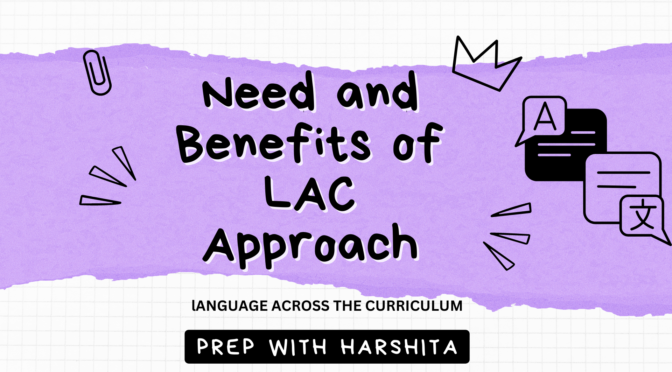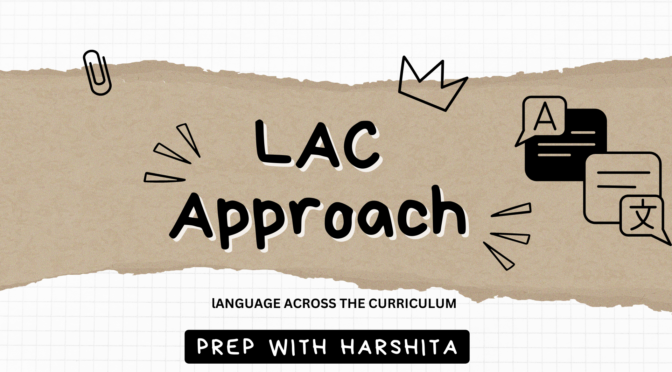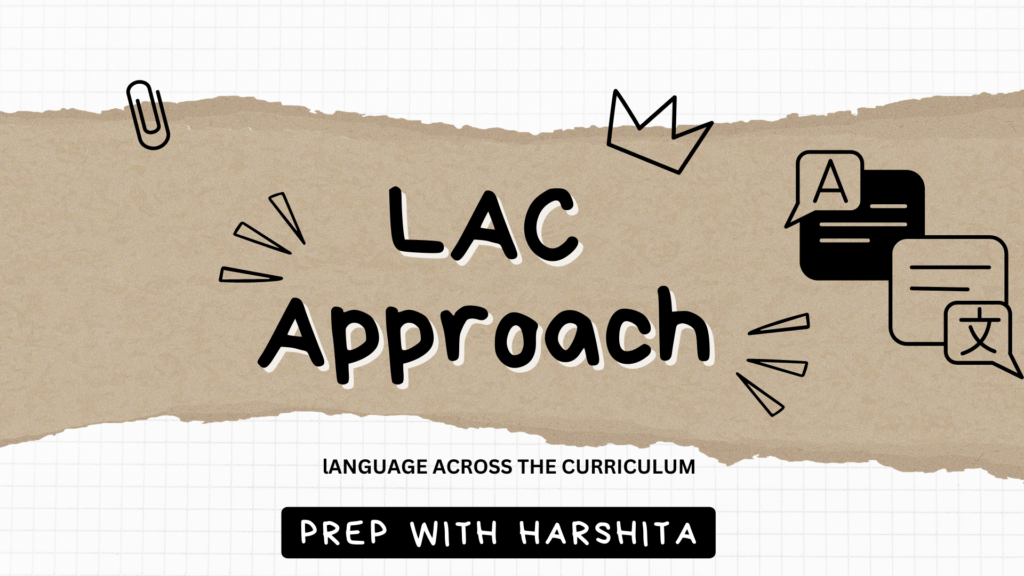The Language Across the Curriculum (LAC) approach is an educational methodology that focuses on integrating language learning with content knowledge across different subject areas. Need of LAC (Language Across the Curriculum) approach is for several reasons.
This approach offers several needs and benefits, which are outlined in detail below:
- Language Proficiency Development: The LAC approach recognizes that language proficiency is a crucial aspect of academic success. By incorporating language learning within the curriculum, students have more opportunities to practice and refine their reading, writing, speaking, and listening skills in meaningful contexts. This approach helps students become competent and confident communicators in both their native language and any additional languages they are learning.
- Content Understanding and Mastery: LAC supports students in comprehending and mastering subject-specific content. By explicitly teaching language skills within each subject area, students gain a deeper understanding of complex concepts, disciplinary vocabulary, and specialized language structures. As a result, they can engage with academic content more effectively and develop higher-order thinking skills within each discipline.
- Authentic Language Use: The LAC approach promotes the use of language in authentic contexts. Instead of treating language skills as isolated exercises, students are exposed to real-world language use within the context of their academic studies. This authenticity helps students develop language skills that are relevant and applicable in various academic, professional, and personal settings.
- Transdisciplinary Skills Development: LAC fosters the development of transdisciplinary skills that go beyond individual subject areas. By integrating language and content knowledge, students enhance their critical thinking, problem-solving, collaboration, and communication skills. These skills are transferable to different academic disciplines and prepare students for future academic pursuits and careers.
- Inclusive Education: LAC embraces linguistic and cultural diversity, promoting inclusive education. By integrating language support within the curriculum, students with diverse linguistic backgrounds and abilities can access and participate in the learning process effectively. This approach recognizes and values the unique strengths and contributions of multilingual students, creating a more inclusive and equitable learning environment.
- Enhanced Student Engagement and Motivation: The LAC approach promotes active learning and engagement. By connecting language learning with subject-specific content that is relevant and interesting to students, their motivation and interest in the topics increase. Students are more likely to be engaged in their studies and take ownership of their learning when language is integrated with meaningful content.
- Improved Interdisciplinary Connections: LAC encourages collaboration and interdisciplinary connections among educators. Teachers from different subject areas can work together to design integrated projects and activities that connect language learning with multiple disciplines. This collaboration fosters a more holistic and interconnected approach to education, allowing students to see the connections between different subjects and develop a broader understanding of the world.
- Coherent Curriculum Design: Implementing the LAC approach requires a coherent curriculum design that aligns language learning objectives with subject-specific content objectives. This alignment ensures that language instruction is purposeful and integrated seamlessly within the curriculum. It promotes consistency in language instruction across subjects and helps students see the interconnectedness of language and content knowledge.
- Improved Assessment of Language and Content: The LAC approach allows for the assessment of both language proficiency and subject-specific content knowledge. Assessments can be designed to evaluate students’ ability to apply language skills in authentic ways, such as writing essays, giving presentations, or engaging in discussions related to subject-specific content. This comprehensive assessment provides a more accurate measure of students’ language development and subject mastery.
In summary, the Language Across the Curriculum (LAC) approach addresses the needs of language proficiency development, content understanding, and transdisciplinary skills. It promotes inclusive education, authenticity, and student engagement. By integrating language learning with content knowledge, LAC creates a more meaningful and holistic educational experience for students.
Also Read: Gender School and Society

Also visit: Prep with Harshita



